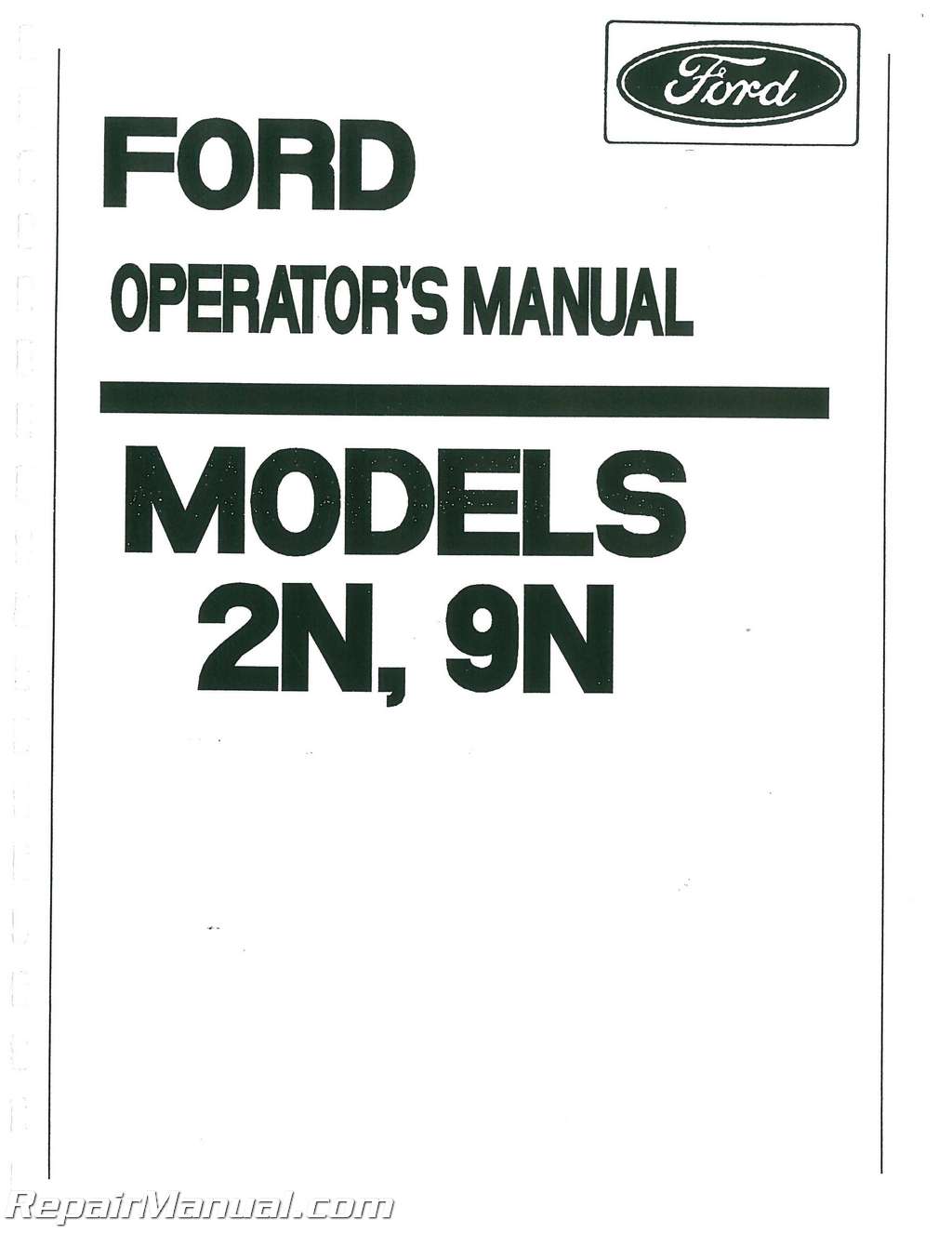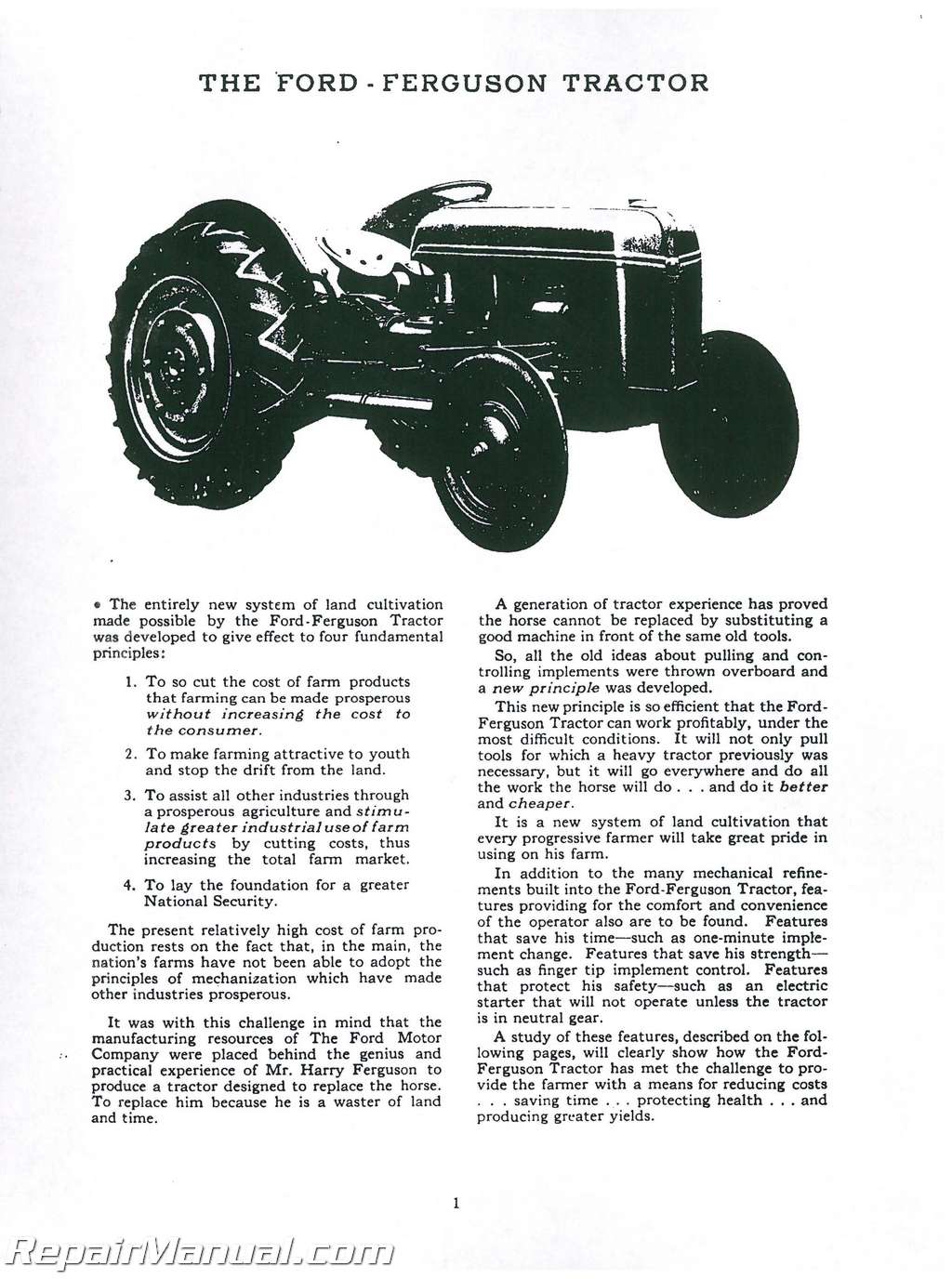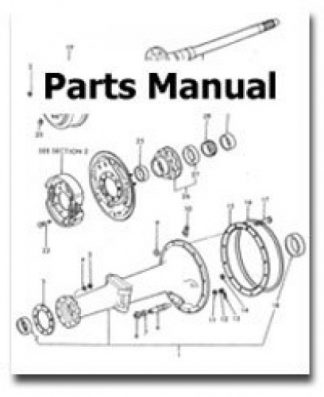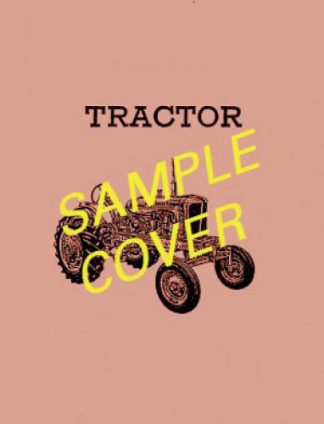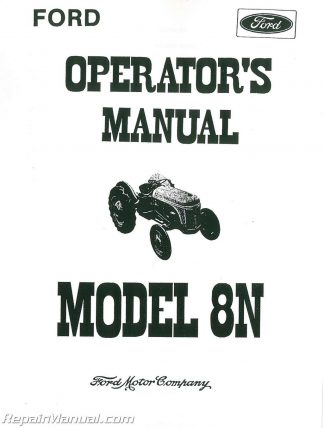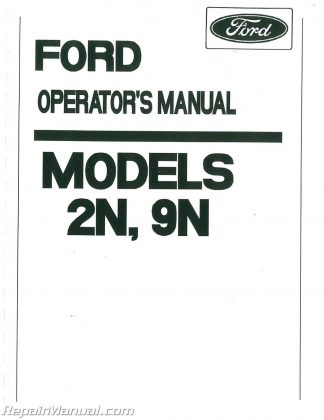Description
This Ford 2N 9N Factory Operators Manual is a reproduction of the manual that came with the tractor when it was new. It is similar to manual you receive in the glove box of a new car.
The Ford 9N had its beginnings with a hand shake agreement between Henry Ford and Harry Ferguson Harry Ferguson, an Englishman, had worked with a system of implement attachment and hydraulic controls. The design work had been conducted for almost 20 years and resulted in the 3-point linkage or hitch. It soon became apparent that a new tractor would be necessary to incorporate the Ferguson system. Henry Ford met with Harry Ferguson and a gentlemen’s agreement reached, whereby Ford would use the Ferguson system in the manufacture of the new tractor. Ford Motor Company had the resources of capital and factories to undertake volume production of a Ford-Ferguson system tractor. Harry Ferguson began to form a company to market the tractors and the implements designed to fit the 3-point hitch. This agreement, according to records, was not witnessed or recorded as to the terms and conditions. A few years later this was to be a legal problem that would require lawyers and experts to untangle and settle. The new tractor was the 9N. It was known as a Ford tractor with Ferguson system The tractor was demonstrated at the Ford farm at Dearborn, Mi. in June, 1939. The tractor had the Ford Logo, Ferguson system plate, and was painted grey. This was Harry Ferguson’s favorite color. The 9N was quite readily accepted and became popular among farmers. It marked the re-entry of Ford in the small tractor market and the new Ferguson system was one of the biggest advances in tractor development. The first year more than 10,000 units were sold. Ford was selling the 9N at a very competitive price and manufacturers remembered how Ford had out-priced the competition with the Fordson in earlier years. The 9N was manufactured until 1942. The war placed restrictions on raw materials and production almost stopped in 1942. Ford then brought out the 2N with some modifications, primarily to use parts more available during the war years. Ford had now moved to second place in tractor production, led only by International Harvester. By 1948 Ford had announced the new tractor to be called the Ford 8N with the Ferguson system Hydraulics. This led to a legal suit by Harry Ferguson. After a costly court battle, Ferguson won the case and a settlement was made by Ford Motor Company. Ferguson manufactured the Ferguson tractor for a few years, and then merged with Massy-Harris to become Massey-Ferguson. The 8N tractor proved popular and Ford remained the second largest tractor manufacturer with 9N and the specially designed mounted implements for it. The 8N, when tested in 1950, produced the following results: the tractor weighed 2,717 lbs., equipped with 10 x 28 rear and 4.00 x 19 front tires. It featured Ford’s own four cylinder L head engine with 3-3/16 inch by 3-3/4 inch bore and stroke, rated at 1750 RPM. It had a four speed transmission ranging from 3.2 MPH to 11.9 MPH. The horsepower rating on the drawbar was 17 6 and 23.2 HP on the belt. Ford was not only selling a popular tractor, but a different way of farming which the farmers were anxious to adopt By 1949 the sales of small tractors were beginning to decline, and larger tractors were in demand. The Ford 8N kept the company as the second largest manufacturer until the early fifties.

